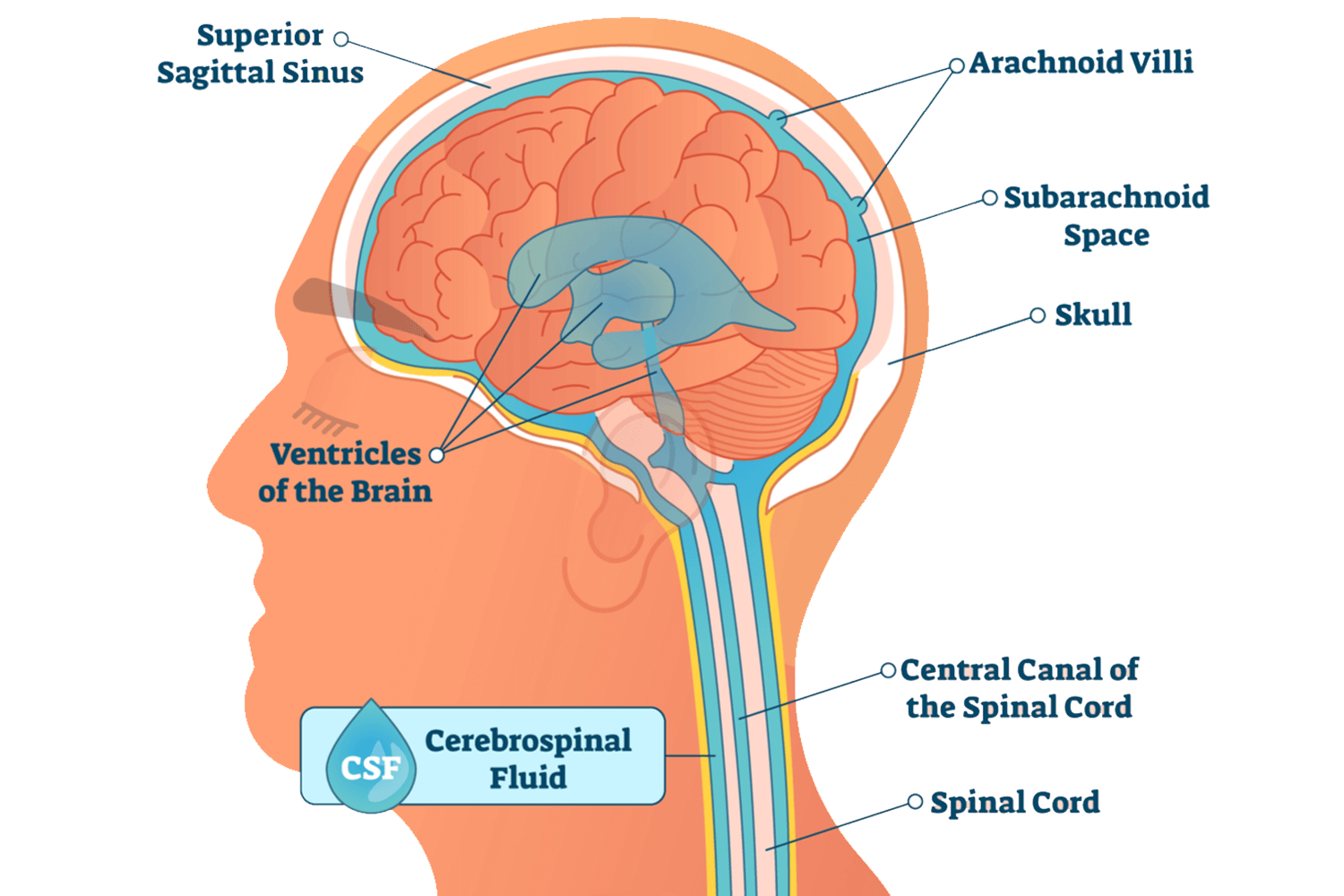What is cerebrospinal fluid (CSF)?
The fluid that surrounds the brain and spinal cord is called cerebrospinal spinal fluid (CSF). CSF is a colorless, watery liquid that circulates around the nervous system and is constantly being produced (up to half a liter per day). It is primarily composed of electrolytes, and mostly lacks protein and cells. CSF serves many functions including providing a protective cushion for the brain, protecting against infections, and is important in regulating the blood flow throughout the brain.
![csf-diagram]()
Cerebrospinal fluid shown in blue.
What is a cerebrospinal fluid (CSF) leak?
A CSF leak occurs when there is a disruption of the bone and tissue that separates the nose and brain. When CSF leaks in the nose, it can produce a clear nasal drip that appears very watery in nature. CSF leaks are potentially life threatening and should be addressed immediately. If the leak is chronic, it greatly increases the risk for developing an infection in the brain.
What are the symptoms of a cerebrospinal fluid (CSF) leak?
- Sharp, sudden headaches that improve when lying down
- Clear, watery nasal dripping from only one particular side of the nose
- Salty or metallic tasting nasal drip
- Nausea or vomiting
- Sudden neck stiffness
- Sensitivity to light or sound
What causes a cerebrospinal (CSF) leak?
CSF leaks are categorized by whether they occur following an injury or surgery, or whether they happen spontaneously on their own. The most common cause of a CSF leak is from some sort of head injury. Other causes are related to abnormally high build-up of cerebrospinal fluid, while other times the cause of the leak is unknown. CSF leaks can also be a complication of sinus surgery and is associated with other disease processes, such as Marfan syndrome and Ehlers-Danlos syndrome.
How are cerebrospinal fluid (CSF) leaks treated?
If your nasal drip has not yet been established as CSF, a sample will be taken and sent to the laboratory for beta-2 transferrin, a protein that is very specific to this type of fluid. A clinical exam with endoscopy will be required to see if the exact location of the leak can be identified. If not, a CT cisternogram (scan of the CSF fluid) will be required to help identify the where the contrast is leaking into the nose. This requires a lumbar puncture in order to inject the contrast dye.
Once the site of the leakage is found, surgery is typically required to plug the roof of the nose. This involves undergoing functional endoscopic sinus surgery (FESS) in order to gain a good exposure of the area, and using the tissue already present in your nasal passages to help repair the leak. If your CSF pressure is too high, you may require a lumbar drain while the repaired area heals.
Patients who have experienced CSF leaks following an injury, like a motor vehicle accident, can typically be treated without surgery.



